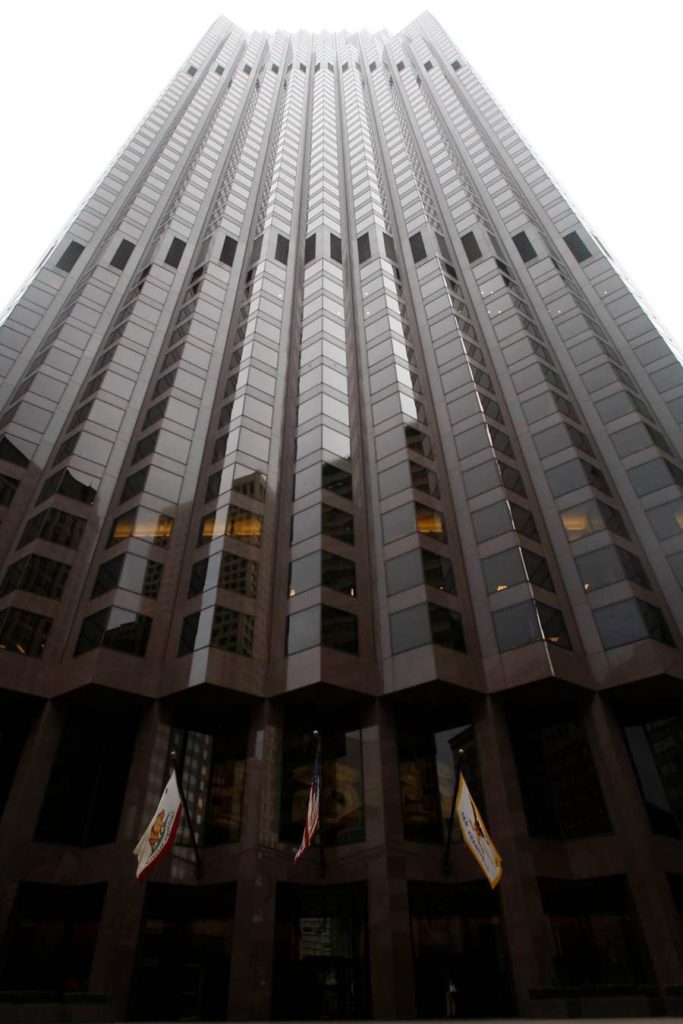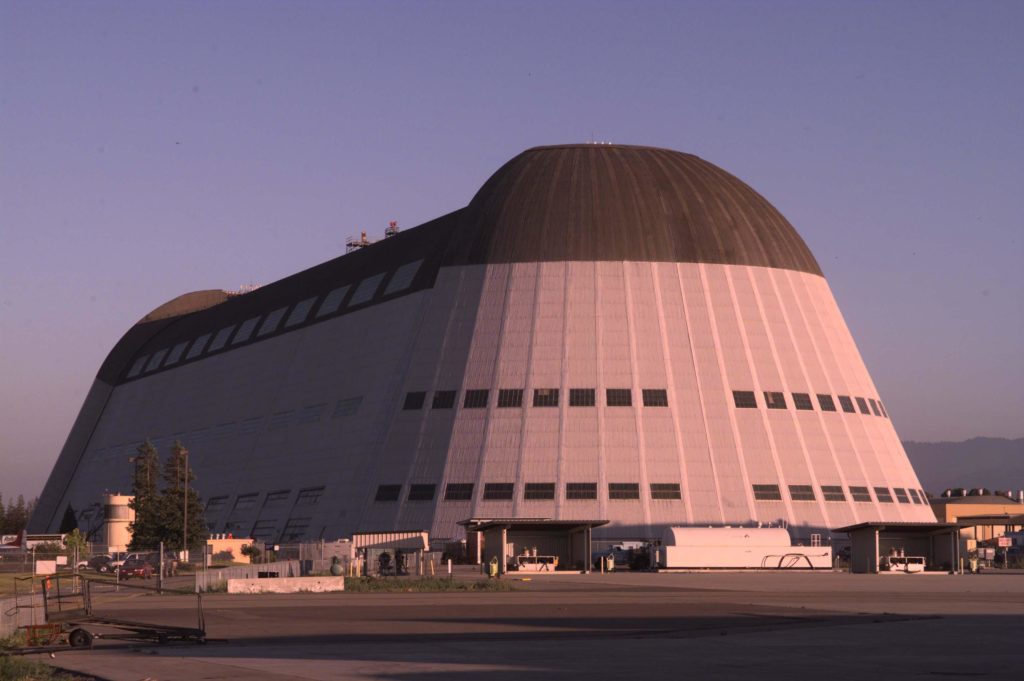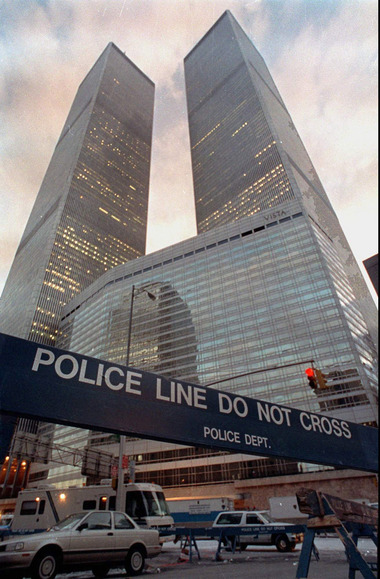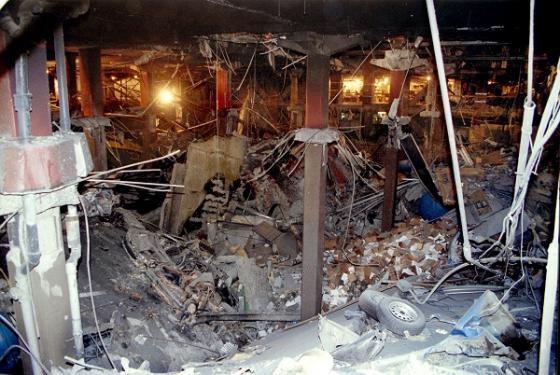Vector 911

September, 2001; 0515 hours Pacific Time
The twin turboshaft GE engines roared to life as the helicopter lifted off from Pad 19A on top of the bank headquarters building at California and Kearny in the heart of the Financial District. The Sikorsky UH-60 Black Hawk rose straight up, hovered like an angry hummingbird, then banked sharply, climbing to 1,000 feet. It skirted the Transamerica Pyramid and followed Columbus Avenue over North Beach toward San Francisco Bay. The pilot pulled the joystick left and cruised to compass heading 270 degrees. The chopper sailed effortlessly up and over the Golden Gate Bridge to the clear, wide Pacific. Angling left again, he paralleled the length of Ocean Beach, then cut in at Mussel Rock. It continued on a southeastern vector along its nominal flight path down the San Francisco Peninsula. The surface of San Andreas Lake, formed from the ancient fault scar of the same name, was black in the early September morning dim. The sun peered over Mount Diablo, not quite golden in the East.
The lone passenger ignored the view. Dressed in Army Class A green, he sat behind the pilot in the aft seat, eyes closed, an unlit cigar in his mouth. His pen absentmindedly tapped on the black leather briefcase straddling his lap.
Lieutenant General Arthur Deveraux heard the pilot order special air space clearance as he split the Lower and Upper Crystal Springs Reservoirs and crossed the Stanford campus on approach to Moffett Field. This chopper had three stars on it, and today was a priority. General Deveraux had instructed his personal pilot, Sergeant Major Thomas “Dom” Dominick, to be particularly sure there was no delay.
“Approaching target, sir,” the pilot abruptly said into the mic. Deveraux’s eyes snapped open.
Sergeant Major Dominick set the Black Hawk down outside one of the most recognizable buildings in Silicon Valley: Hangar One, a former naval air ship hangar. Most would call them “blimps” today.

Hangar One was a fifth of a mile long and a football-field wide. Covering eight acres and soaring to a curved height of 200 feet, it resembled a gargantuan loaf of artisanal bread, albeit one that could contain a Zeppelin, which it once did.
“Good job, son,” Deveraux shouted to Dom over the still-rotating blades. “See you back here at 1600 hours.”
The pilot stared back through his tinted visor and flashed a quick thumbs up.
An aide in uniform ran to the chopper, opened the hatch and saluted the general. Deveraux grunted as he returned the salute, tossed his soggy cigar to the tarmac and stepped out. The blades revved to a loud whine, and the chopper took off as soon as its passenger’s feet touched the ground. The aide ducked his head beneath the vortex of the blades, but General Deveraux walked erect and held his cap by the peak in the rotor wash maelstrom.
As they headed toward the secured entrance, two Military Police Corpsmen wearing burnished chrome helmets and white leather shoulder belts saluted. Their waist-holstered 24″ wood riot batons and Beretta M9 sidearms were at the ready.
“Sergeants,” Deveraux said as he returned the salutes.
One turned and entered a code on the digital panel affixed to the exterior of Hangar One. Hardened, pneumatic double doors opened. Deveraux and his aide walked rapidly inside while the doors closed on their heels. They strode down the long corridor, which ended in a bank vault-like door. “Secure Area: Unauthorized Personnel Will Be Shot” signs hung on every wall. Deveraux returned the salute of another MP, who had entered the security code as the general approached. The vault door hissed open, and Deveraux and his aide swept around the monolithic lock mechanism into the command center without slowing.
The vault door closed with a thunderous metallic clang behind them. A squad of military police, selected for their loyalty and ability to keep their mouths shut, stood against the curved walls of the former air ship hangar. Sitting perfectly still next to every third guard were gorgeous German Shepherd purebreds, capable of sniffing hidden explosives at fifty feet or ripping your throat out, given the chance.
Deveraux and his aide stopped as they let their eyes adjust to the cavernous, strategically lit Terrorism Assessment and Reconnaissance West Coast Operations Center.
The general’s mind went back to 1993.
“The bastards,” he thought.
***
New York City. World Trade Center. Al-Qaeda. Truck bomb.

General Arthur Deveraux and his team had been in the North Tower having a luncheon meeting with select business associates as part of a mutually lucrative civilian alliance. Eisenhower’s “military-industrial complex” be damned, Deveraux thought back then. His favorite phrase while speaking to an audience was, “Guns are good.” Gordon Gekko was his hero.
“What is it this time, General?” asked the CEO of the largest bank in the U.S., wiping cocktail sauce off his cheek. “We are getting tired of being summoned whenever you or your staff have a new idea for T.A.R.E. Frankly, this project of yours doesn’t really seem all that worthwhile.”
General Deveraux stared at the man.
The Terrorism Assessment and Reconnaissance Enterprise had been created as a public/private venture spearheaded by Deveraux. None of it was actually public. The general had contacts in all the branches of the military, the major intelligences services, and had cultivated many useful and influential friends in both parties of both houses of Congress, the judiciary and, certainly, the White House. He had reached out to strategic business operatives who saw the value in supporting the country’s covert programs. We weren’t yet at war with terrorism, but General Deveraux’s patriotic zeal was exceeded only by his associates’ desires for financial advancement.
“You talk about time,” said Deveraux. “It’s a luxury none of us has.” He turned toward the window and scanned the skies above the Manhattan panorama before him.
“They are coming at us,” he continued. “It’s going to happen, sooner than we…”
He felt the blast through the table, through the floor, through the twenty stories that separated him from the garage level. Screams sounded from an adjoining conference room. Deveraux’s staff abandoned their meals and rushed down the emergency staircase as fast as possible in the dark; black smoke and soot rose from below and clogged their lungs. By the time they reached the source near the basement, they heard the screaming and sirens and screeching of tires as emergency vehicles from every law enforcement, public safety, health, civil defense, military and intelligence agency descended on the World Trade Center.
All hell had just broken loose in America.

* * *
The harsh ringing of telephones startled General Deveraux back to the present. He pulled out another cigar and removed the plastic wrapper. The aide lit it perfectly with a gold lighter. He put the wrapper and lighter in his pocket, turned and disappeared into a doorway with a large, red and black “No Smoking” sign above it. The haze of smoke hung in the air amid the blinking lights of outdated computers.
General Deveraux turned toward the open chamber. “Colonel,” he barked. “Your report?”
Colonel Charles “Chuck” Forbin moved toward Deveraux from his station by the Terrorism Simulation Array Detail.
“Sir,” Colonel Forbin replied. “We have NORAD’s visual and data feeds on the bogie. Computer analysis shows a 94.5 percent chance that the plane is headed for New York City,” Forbin said. “Vector is Manhattan. And…”
“And what, Colonel?” Deveraux said.
Colonel Forbin struggled to get the words out.
“Colonel!” General Deveraux commanded.
“NSA analysis shows the aircraft is armed.”
“Commercial aviation,” Deveraux said, not a question.
Forbin nodded.
“Domestic?” Deveraux asked.
Forbin said, “Verified.”
Deveraux shook his head.
“Pass your feeds to the Sim Array Detail, Colonel,” he ordered.
Forbin rotated back to his station and pressed a few keys. After hitting the “Enter” key, he turned his back to the general, reached into his uniform pocket, took out a white handkerchief and wiped his forehead and mouth.
Deveraux scowled and turned his attention to the giant electronic map of the East Coast of North America on the long wall of the hangar. A blinking red dotted line was converging, its track honed in on Manhattan Island.
“ETA?” he asked.
Forbin stood and turned toward the two young civilian types sitting at twin desks next to his station.
“Time to contact?” Forbin relayed.
The civilian techs were both Digital Simulation Specialists, each with four large computer screens in front of them. Their job was to run through parallel operations scenarios as real-time threats were presented: computers confirming human assessments.
Butted up against the ends of their desks was a gray box the size of a filing cabinet, with one red light, dozens of buttons and switches, and a computer-printed sign that said:
“HOW ABOUT A NICE GAME OF CHESS?“
“One second, Colonel,” the young man said. “Running final sim check now.”
Forbin looked at his superior officer, then turned back to the Simulation Array desks and said louder, “Mr. Braeden!”
Rick Braeden was thirtyish and slightly built. He had failed miserably to keep his long, scraggly hair in place, tying it back into a ponytail held by a rubber band. He clicked away at his keyboard while staring deep into his massive grid of screens, multiple shades of data movement reflected in his thick glasses.
Rick raised his index finger. “I……….got it, Colonel. NX scan projects Manhattan airspace crossing at 0900 hours Eastern, plus or minus 4.2 minutes.”
Forbin looked down at the Timex Expedition on his wrist, turned back to General Deveraux and added, “Ten minutes from now, sir,”
Deveraux deepened his scowl at Colonel Forbin, then looked back at the young tech.
“What’s the target, son?” he asked.
Braeden glanced up at General Deveraux. “Hard to say, sir. The computer estimates it’s most likely headed for either the Empire State Building, the Statue of Liberty or…” He stopped and leaned into his screens, while his fingers drummed a fast, syncopated rhythm on his desk.
“Mr. Braeden?” the general said in surprisingly gentle voice.
The young tech stopped drumming his fingers.
“Wait a minute,” Rick said. “Yes……….yes sir,” looking back at Deveraux. “96.8 percent probability the World Trade Center as prime target.”
Deveraux walked over to the two civilian techs stationed at the Simulation Array and glared at their colossal screens, as though he doubted the announced results.
He stood behind the young woman sitting next to Braeden.
“Ms….excuse me, my dear…Dr. Livingstone,” General Deveraux said. “Your opinion?”
“Sir?” she asked without looking up from her screens.
Suravi Patel Livingstone was in her mid-twenties, skin the color of coffee with cream, black horned-rimmed glasses and long black hair draping down her back. She wore a white blouse covered by a pale, sea green cardigan sweater, casually buttoned at the waist. No jewelry, except for a gold ring set with a small sapphire stone on a simple matching chain around her neck, mostly hidden in the vee of her blouse.
Deveraux moved closer to her chair. “The simulation results,” he said to her. “Are they accurate?”
“Sir,” she said, “I think we should go deeper and check for, ah, alternative conclusions.”
“Such as?” Deveraux asked.
Suravi swiveled her chair in Deveraux’s direction, revealing the long, formfitting teal skirt down to the middle of her calf, slit to mid-thigh and black stilettos.
“Sir,” she said, looking directly at the general, “we have to look at endgame scenarios.”
General Deveraux held her look. “Meaning?…” he said.
“Sir,” she said without turning away under his gaze, “what if there are nukes on board?”
He raised his eyebrows. “Nukes?”
“Exactly…sir,” she said.
Deveraux took a puff. “Dr. Livingstone,” he intoned. “Run your analysis. You have one minute.”
Suravi turned back to her screens, her fingers already dancing over the keyboard. Numbers flashed on the screen in a dizzying blur. The general moved closer and pressed his torso against her chair.
Rick Braeden turned to General Deveraux and said, “Sir, my regression synthesis recommends you order the evacuation of the World Trade Center.”
Deveraux pulled on his cigar and let out a deep blue cloud of smoke that hung around his massive frame.
“No, son,” he said looking down at the tech. “There’s no time.”
The klaxon blared, filling the hangar with loud, repetitive, intentionally obnoxious blasts. Reflective red lights spun in the corners and the middle of every wall. They cast eerie shadows on the portrait of the President hanging from the south end. Everybody scurried to their stations.
“General,” Forbin said, “we have another bogie…heading 29-49 point 63. Range 18.4 miles. Different trajectory than Plot One, heading northeast but same vector…Manhattan.”
Among the chaos, Suravi sat back in her chair and stared at the computer screens, which glowed on her dark skin in the hazy, shadowed hangar. Calm but intense, she sucked on the top of her pen. She jolted forward, typed furiously on her keyboard then stopped.
“It’s confirmed, sir,” she shouted over the klaxon. “Heuristic SLD model predicts fissionable material on both craft….90.16 percent probability.”
“Continue your readout, Dr. Livingstone,” Deveraux said.
He patted her shoulders as though to reassure, his hands left there a bit too long.
Forbin said, “Five point oh miles from prime coordinates. Interceptors have been scrambled and are paralleling. Civilian air space has been cleared.”
Deveraux went over the situation in his head:
- Trajectory: Downtown New York City
- Armaments: Nuclear
- Threat Assessment: Terrorist Attack
- Objective: Threat Elimination.
“Ready POTUSComm at seven point oh,” Deveraux ordered.
Forbin walked over to the red phone.
General Deveraux squeezed Suravi’s shoulders. She froze. He was the boss. He held her future in his hands. She rolled her shoulders to try to shrug him away. Bad move. He took it as encouragement. Unseen by Colonel Forbin or the rest of the staff, Deveraux’s fingers continued to edge closer to their intention.
“Target in range, sir,” a CommTech called out.
“Colonel Forbin,” General Deveraux commanded. “Get me the President.”
Forbin picked up the red phone and pressed the lone button on the base. He paused.
“POTUSComm code 14X-1,” Forbin said into the receiver.
He nodded at the reply and passed the handset to his commanding officer.
“Situation Room,” the distant voice said.
“We have a ‘Go’ for Operation Air Grapple,” General Deveraux said. “Initiation code Alpha Lima Quebec One Niner Niner Three, over.”
“Hold,” the voice on the other line said.
Deveraux heard muffled sounds on the phone in his hand.
Then, “POTUSComm: Affirmative, execute.”
“Copy. Out,” the general replied.
Deveraux nodded to Forbin as he passed the phone back.
“Colonel, note the time,” the general ordered.
“Zero five forty-three hours, Pacific Daylight” said Forbin, as he pressed a few keystrokes on his terminal and looked up at the digital display panel under the giant map.
At T-minus zero seconds, the F-22s that had been scrambled from McGuire Air Force Base outside of Trenton would fire their full complement of AIM-9 Sidewinder missiles at the two straying civilian aircraft headed for the World Trade Center. Threat elimination initiated.
The computer models specifically left out the passenger and crew counts: the U.S. military command was preparing to exterminate 147 mostly American souls.
“Nine, eight, seven…” a loud, haunting voice reverberated from the public address system.
Suravi’s eyes widened and she took off her glasses. Something wasn’t right on her computer screen.
At “five” Suravi yelled, “No, wait!”
She leaned across towards Rick’s keyboard and pressed a few keys.
“…Two…” the disembodied voice said.
She stood and smashed the “Enter” key on Rick’s keyboard.
“OPERATION DARK BRINK — SIMULATION ABORTED”
flashed red on every screen in the hangar.
The klaxon morphed to a steady background hum; the flashing red lights turned to solid yellow; dotted flight lines on the giant map disappeared; the air in the hangar appeared clearer.
The entire scenario had been a simulation. There was no threat this September day. The attack had been generated in the mind of the computer. Terrorist Armageddon had been prevented.
The five-foot face on the big screen feed from NORAD said, “Clear, sir, comm out,” and the screen went black.
“Good job, Colonel,” General Deveraux said as he stabbed out his cigar in an ashtray next to a desk. “Mission accomplished.”
Had this been real, hundreds of thousands of people in New York would have died that day.
Deveraux looked out at the group. He locked eyes on Suravi and walked toward her. She turned away and sucked at the top of her pen. The general bent close to her ear. His thick lips brushed against her silky hair.
“You made me proud today, darlin’,” he whispered. “I don’t want this to end.”
She jerked her head away and swatted at the air as though she felt a horsefly buzzing in her ear.
Deveraux stood upright and pretended to straighten his tie. He turned and stepped to the public address microphone and cleared his throat.
“OK, men,” he announced, “good work. Reconvene tomorrow morning, same time, 0530 hours.”
A series of groans permeated the group.
“Look sharp!” General Deveraux commanded as he surveyed the massive chamber. “Today, 10 September, 2001, was a great exercise. You all did extremely well.”
His eyes scanned the room.
“Tomorrow. September 11th. We’re gonna make it even more realistic.”